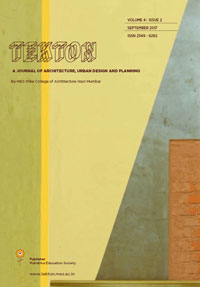Amita Sinha
Tekton
Volume 4, Issue 2, September 2017
pp. 36 – 53
 Amita Sinha is a Professor in the Department of Landscape Architecture at the University of Illinois at Urbana Champaign, USA. She is the author of Landscapes In India: Forms and Meanings (University Press of Colorado, 2006; reprinted by Asia Educational Services, 2011) and editor of Landscape Perception (Academic Press, 1995) and Natural Heritage of Delhi (USIEF and INTACH, 2009). She recently co-edited a volume on studies in heritage conservation and management- Cultural Landscapes and Heritage Conservation in South Asia (Routledge, 2017).
Amita Sinha is a Professor in the Department of Landscape Architecture at the University of Illinois at Urbana Champaign, USA. She is the author of Landscapes In India: Forms and Meanings (University Press of Colorado, 2006; reprinted by Asia Educational Services, 2011) and editor of Landscape Perception (Academic Press, 1995) and Natural Heritage of Delhi (USIEF and INTACH, 2009). She recently co-edited a volume on studies in heritage conservation and management- Cultural Landscapes and Heritage Conservation in South Asia (Routledge, 2017).
ABSTRACT
The ghats of Varanasi have been sketched, painted and photographed endlessly, especially the panoramic view, popular since the nineteenth century. This ‘way of seeing’ reflects the Western picturesque convention and is associated with the aesthetic experience residing in the view. I argue that the idea of the landscape as a picturesque view does not fully describe the experience in the ghats. Instead the cultural landscape should be interpreted as a ‘situated event’, of text enacted and performed, and experienced through all the senses. The sensual engagement of the body with the landscape is the basis of feelings and emotions in embodied perception. The spatial and formal design language of the ghats supports a range of spatial practices, some of which are spectacular such as aarti to Ganga and cremation rites. The spectacles mesmerize but also evoke bhavs (feelings) creating an aesthetic experience.
KEY WORDS
Ghats, Ganga, Cultural Landscape, Natural Archetypes, Spatial Practices, Embodied Perception


